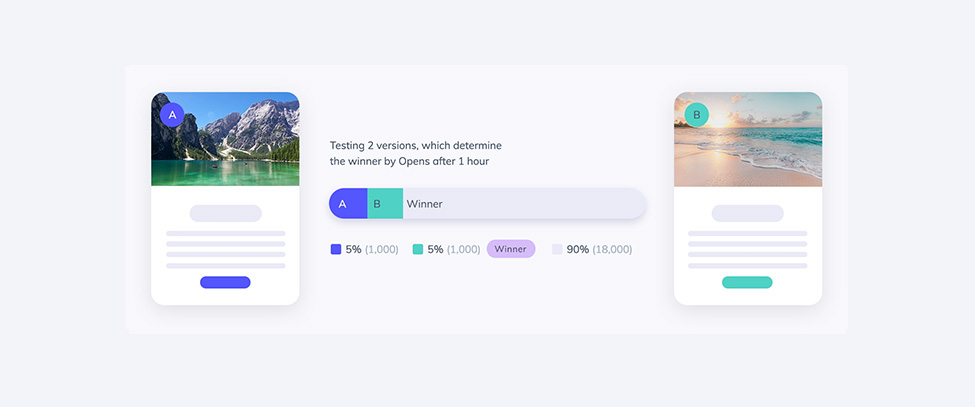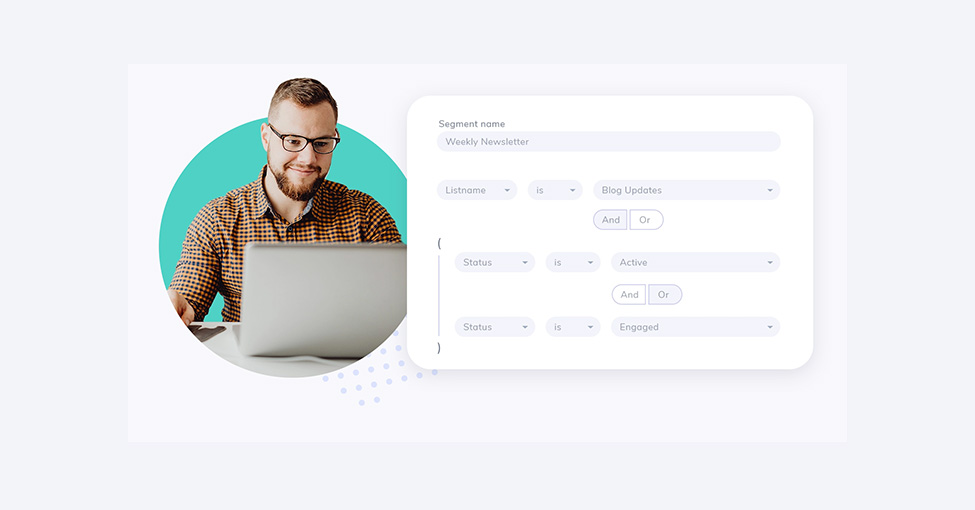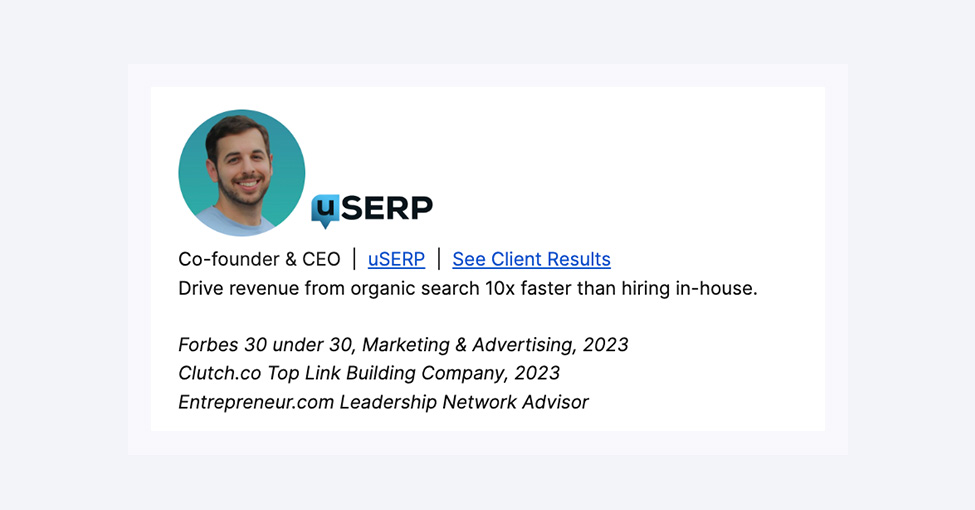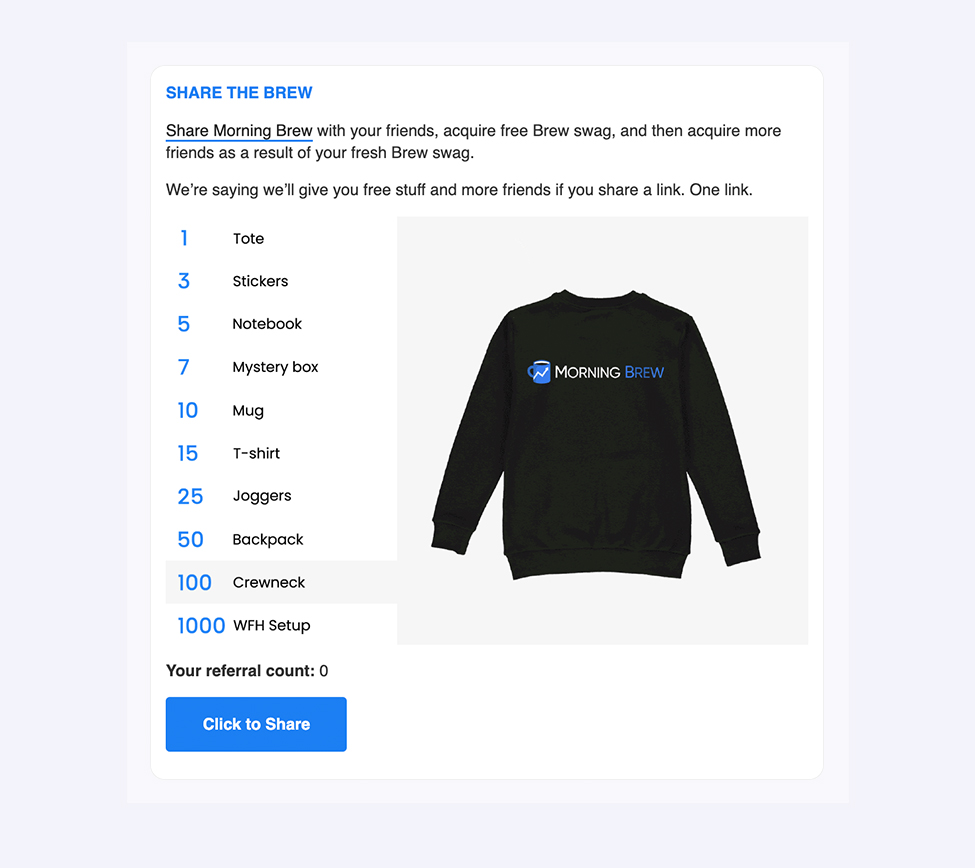Sure, ChatGPT might be capturing headlines left and right, but let's not forget the unsung hero here: email marketing.
Connecting with your audience is a big deal. And hey, email marketing can make you up to $45 for every $1 spent on targeted emails. That's some serious return on investment.
But hold on a minute. It's not all about hitting send and hoping for the best. You wouldn't invest in a business without looking at the financials, would you? The same goes for your email campaigns.
You need to know what's hitting the mark and what’s missing it. Imagine throwing money at a new campaign only to find your precious emails in the spam folder! We don't want that.
That's why we’re reviewing the top ten email marketing metrics and KPIs to drive your success today. By the end of this article, you'll walk away with the insights needed to take your email marketing to the next level.
Table of Contents
- Critical Email Marketing Metrics Every Marketer Needs to Know
- Advanced Email Marketing KPIs to Monitor
- Leverage Email Marketing Tools to Track Metrics and KPIs
- Key Takeaways
Are you ready to dive in? Let's get started.
Critical Email Marketing Metrics Every Marketer Needs to Know
Here are the fundamental metrics that every marketer should know when running an email marketing campaign.
1. Open Rate
This metric is one of the most basic (and important) email marketing metrics. The open rate measures the percentage of recipients who open your emails.
A high open rate indicates that your subject lines and email content are engaging and compelling (read: your audience is interested enough to open your email).

On the other hand, a low open rate may indicate that your emails aren't resonating with your audience or are being marked as spam. A less than ideal scenario.
To improve your open rate, consider personalizing your subject lines, testing different variations, and analyzing the best time to send emails based on your audience's past behavior.
One effective way to achieve personalization is by using an AI voice generator. This innovative technology allows you to create personalized audio messages that can be embedded within your emails.
Imagine receiving an email that starts with a friendly voice saying, "Hi [Recipient's Name], we have an exclusive offer just for you!" That’s the epitome of an intimate and engaging email experience.
Moreover, you can customize the tone and style of the voice to match your brand's personality, further enhancing the personalization aspect. How cool is that? Plus, you stand out from the hundreds of other emails your recipients get every day.
This personal touch instantly grabs attention and makes the recipient feel valued. Incorporating an AI voice generator into your email marketing strategy can significantly improve your open and conversion rates (more on conversion rates in a bit).
2. Click-through Rate
The next essential email metric is the click-through rate (CTR), which measures the percentage of recipients who click on links within your email. This metric is particularly helpful when evaluating the effectiveness of your email content and calls-to-action (CTAs).
A high CTR indicates that your emails engage and drive recipients to take your intended action (purchase a product, sign up for an event, navigate to a landing page, etc.).
To boost your CTR, create compelling and relevant content, use clear and enticing CTAs, and optimize your email design for easy navigation and readability.
Take a page from Four Seasons’ book if you need inspiration. They catch the recipient's eye using dream-worthy images and thoughtful motion design elements that guide attention through the email smoothly. From there, they provide a simple navigation menu at the top of the email, and then the eye naturally flows to the clean and simple call to action at the bottom.
There’s nothing confusing about this email. Thanks to the visual elements, it’s intriguing, and recipients are eager to learn more. Well done, Four Seasons.

If your hands just broke out in a sweat because you lack the graphic design skills to mimic that of Four Seasons, don’t worry. There are plenty of free templates available online that already have the technical parts done for you.
All you have to do is choose from a variety of fonts, colors, and images, and you can create your own compelling email for your brand. But remember, stick to the templates that align with your brand's color palettes and style to create a cohesive and recognizable visual identity.
Additionally, ensure the templates are responsive and optimized for different devices, providing a seamless experience for recipients regardless of the device they use to read your emails.
Check these items off your to-do list, and it’s only a matter of time until you see your CTR reach your campaign goals.
3. Bounce Rate
The bounce rate measures the percentage of emails not delivered to recipients' inboxes. Bounces fall into two categories: hard bounces and soft bounces.
Hard bounces occur when emails are permanently rejected due to invalid or nonexistent email addresses, while soft bounces occur when emails are temporarily rejected due to issues such as a full inbox or server problems.

Checking your bounce rate is helpful for maintaining a clean and healthy email list. Regularly remove hard bounces from your list and investigate the reasons behind soft bounces to ensure optimal email deliverability.
For instance, JPMorgan realized they made a $175 million investment mistake when they sent an email campaign to a list of 400,000 Frank customers (a new company they acquired), and 70% of the emails hard bounced.
Why? The email addresses were fake. Later, the owner of Frank was indicted on securities, wire, and bank fraud (along with conspiracy charges).
4. Conversion Rate
The conversion rate is the percentage of recipients who take a desired action after clicking on a link within your email. This action could be purchasing your software, filling out a form, signing up for a webinar, or any other goal you have set for your email campaign.
Tracking your conversion rates helps you assess the effectiveness of your email content, landing pages, and overall user experience. To increase your conversion rate:
- Test different versions of content, formats, and messaging to find out what works best.
- Create a seamless transition from email to your desired conversion point.
- Keep your emails highly relevant to your audience.
- Provide clear instructions and succinctly summarize key details to keep the audience hooked.
To optimize your conversion rate, you must understand what factors influence your audience’s behavior and decision-making process. That’s where AI analytics can help you.
AI analytics uses artificial intelligence and machine learning to analyze large and complex data sets and provide insights and recommendations for improving your email marketing strategy.
For example, you can use AI analytics to segment your audience based on their preferences, interests, and behavior and send them personalized and relevant emails that increase their likelihood of converting.

You can also test different variations of your email content, such as subject lines, images, and calls to action, and determine which ones perform better.
5. Unsubscribe Rate
The unsubscribe rate measures the percentage of recipients who choose to unsubscribe from your email list after receiving an email. While it can be disheartening to see people unsubscribe, it is an important metric to watch.
A high unsubscribe rate may indicate that your emails aren't meeting your audience's expectations or that your email frequency is too high. To minimize unsubscribes:
- Segment your email list to send more targeted messages.
- Allow recipients to easily manage their email preferences.
- Ensure that your email content provides value.

6. Spam Complaint Rate
Nobody likes spam emails. And the spam complaint rate gives you the percentage of recipients who mark your emails as spam. We consider this a critical metric to watch, as it directly impacts your email deliverability and sender reputation. And reputation is difficult to restore once tarnished.
High spam complaint rates can lead to emails filtered directly into spam folders or even “blacklisted” by email service providers.
To avoid spam complaints, focus on sending relevant and permission-based emails, clearly identify yourself as the sender, and provide an easy way for recipients to unsubscribe.
Here’s an excellent example of a simple way to build rapport with your recipients: a professional email signature.
It's important to create a captivating email signature that includes your contact information and provides a glimpse into your brand's personality and value.
Consider including a compelling tagline or a brief business description in your email signature, as Jeremy Moser, the Co-founder, and CEO of uSERP, does below. This simple step helps recipients remember your brand but also gives them a sense of what you offer.

Additionally, including links to your social media profiles, links to landing pages, or a call-to-action (CTA) button can drive traffic to your website or encourage recipients to engage with your brand on other platforms. Effective email signature management is essential for ensuring consistency and professionalism in all your communications. It's also incredibly easy to use it to design your signature or create consistent signatures for your new coworkers, helping maintain a unified brand image across your team.
Keep in mind that simplicity is key when designing your email signature. So, avoid cluttering it with too much information or excessive design elements.
And for more information on what to do (and, more importantly, what not to do), learn from some of the best examples of email signatures that grab the reader’s attention and drive clicks.
Advanced Email Marketing KPIs to Monitor
If you want to cover more ground with your email marketing campaign, keep these advanced email marketing metrics on your radar.
7. List Growth Rate
Your email list is worth its weight in gold. And the list growth rate measures the rate at which your email list grows.
A healthy list growth rate indicates that you are effectively attracting new subscribers and preserving existing ones. To boost your list growth rate, consider implementing strategies such as:
- Promoting your email newsletter on your website and social media channels.
- Optimizing your opt-in forms for a seamless user experience.
- Offering valuable opt-in incentives.
Here’s a stellar example of an irresistible offer from Wordable. Nearly every marketer is willing to exchange their email address to unlock this treasure trove of training material.

8. Email Sharing/Forwarding Rate
When a recipient shares your email, it's worthy of a little happy dance. That means they like it enough to spread the word. This simple share increases your engagement and boosts your chances of growing your email list.
So, the email sharing/forwarding rate measures the percentage of recipients who share or forward your emails to others. As mentioned, this metric provides insights into the virality and reach of your email content.
To encourage email sharing, consider including social sharing buttons, creating shareable content, and incentivizing recipients to refer your emails to their friends and colleagues.
Here’s a peek at Morning Brew’s referral offerings:

9. Cost Per Acquisition
This metric allows you to evaluate the cost-effectiveness of your email campaigns and compare them to the performance of your marketing channels.
The cost per acquisition (CPA) measures the average cost of acquiring a new customer or lead through your email marketing efforts. To calculate your CPA, divide the total cost of your email marketing campaigns by the number of new customers or leads generated.
By optimizing your email campaigns to reduce CPA, you can maximize your return on investment (ROI).
10. Overall ROI
And finally, we have the overall return on investment (ROI), which measures the effectiveness of your email marketing campaigns (in terms of revenue generated). It considers the costs associated with running your campaigns and the revenue generated from conversions.
To calculate your ROI, divide the revenue generated from your email campaigns by the total cost of your campaigns. Tracking your overall ROI allows you to understand the true impact of your email marketing efforts on your business's bottom line.
The higher the ROI, the more money in your pocket at the end of the day. And that’s music to any business owner's ears.
Leverage Email Marketing Tools to Track Metrics and KPIs
Having the right tools to accurately track and measure email marketing metrics and key performance indicators is vital to success. These tools should provide detailed reports and analytics for you to analyze.
That’s where Elastic Email comes into play. With features such as activity reports, geolocation tracking, click maps, detailed link-click monitoring, click rates, and delivery statistics, you’ll improve upon every email you send to drive the best results.
Real-time delivery monitoring allows you to track the deliverability of your emails and take immediate action if any issues arise. Additionally, unsubscribe insights help you understand the reasons behind unsubscribers and adjust your strategies accordingly.
Adding Elastic Email to your tech stack helps you work smarter, not harder. And your email metrics skyrocket. What’s not to love?
Key Takeaways
Overall, analyzing email marketing metrics and setting up KPIs will help guide your strategy. On top of that, you can hold yourself and your team accountable for meeting your email marketing objectives.
If you’re in the market for a dynamic, multi-product email marketing platform, you’re in the right place. Try Elastic Email for free to take advantage of all the email metric tracking solutions we offer and accelerate your campaign’s growth.
To your email marketing success!







